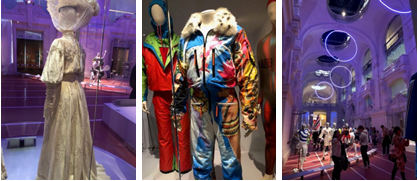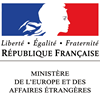Fashion world

Fashion and sport, from one catwalk to another
At the Musée des Arts Décoratifs, the Haute Couture and Sport exhibition "from one catwalk to the
other" highlighted the links between two seemingly distant worlds. The Olympic Games in Paris
provide an opportunity to discuss these links. The exhibition is both chronological and thematic. It
opens with an evocation of the first Olympic Games held by the Greeks, where nudity triumphed in
the stadiums! In the Middle Ages, there was no talk of sport as such, and only the nobility took part
in tournaments, hunting and horse-riding. The Age of Enlightenment began to show that physical
exercise was good for the body, and clothes began to be made to be comfortable. Silk was replaced
by cotton and wool, and Marie Antoinette, and later Josephine, began to wear cotton voile outfits so
that they could walk more comfortably in the grounds of Versailles or the Trianon, and ride horses,
still dressed as Amazons! But wearing breeches was the first step towards women’s trousers. The
word sport appeared in the 19th century. The first treatises on gymnastics were published at the end
of the 18th century, and England played a key role in the development of sports, even if the outfits
used for tennis were still very uncomfortable to wear on the courts! In 1919, Jean Patou designed a
pleated dress for our champion Suzanne Lenglen, and in 1933 champion JP Lacoste created his
famous Lacoste shirt (now Polo) by cutting the sleeves off his shirt to make it more comfortable. All
the fashion houses designed clothes and outfits for sport; tracksuits warmed up athletes and the
fashion houses made themselves available to them. Gabrielle Chanel gave jersey pride of place,
even in ready-to-wear clothing. All the fashion houses of the day had sportswear departments! The
development of cars, skiing and seaside bathing saw the emergence of adapted clothing, such as
beach pyjamas in 1930. Knitted or jersey swimming costumes made their appearance, especially as
the vote for paid holidays democratised these practices in 1936. The bikini was adopted in 1946.
Then the technical side of clothing borrowed from industrial fields to make garments more
effective, and new materials gave a new lease of life to board sports, and the famous Vogue
magazine published a Sports edition in 1983. Logos and brands are moving into sportswear, and the
great champions are becoming the support for these brands. For a few months, the great nave of the
Musée des Arts Décoratifs has become the sports ground for all the Haute Couture brands! We can’t
wait to watch the big games next summer. Our friends in the "L’univers de la mode" group were
delighted with the visit. Our December outing will be devoted to an extremely innovative Dutch
artist, Iris Van Herpen.
Annick Sohier, The world of fashion


